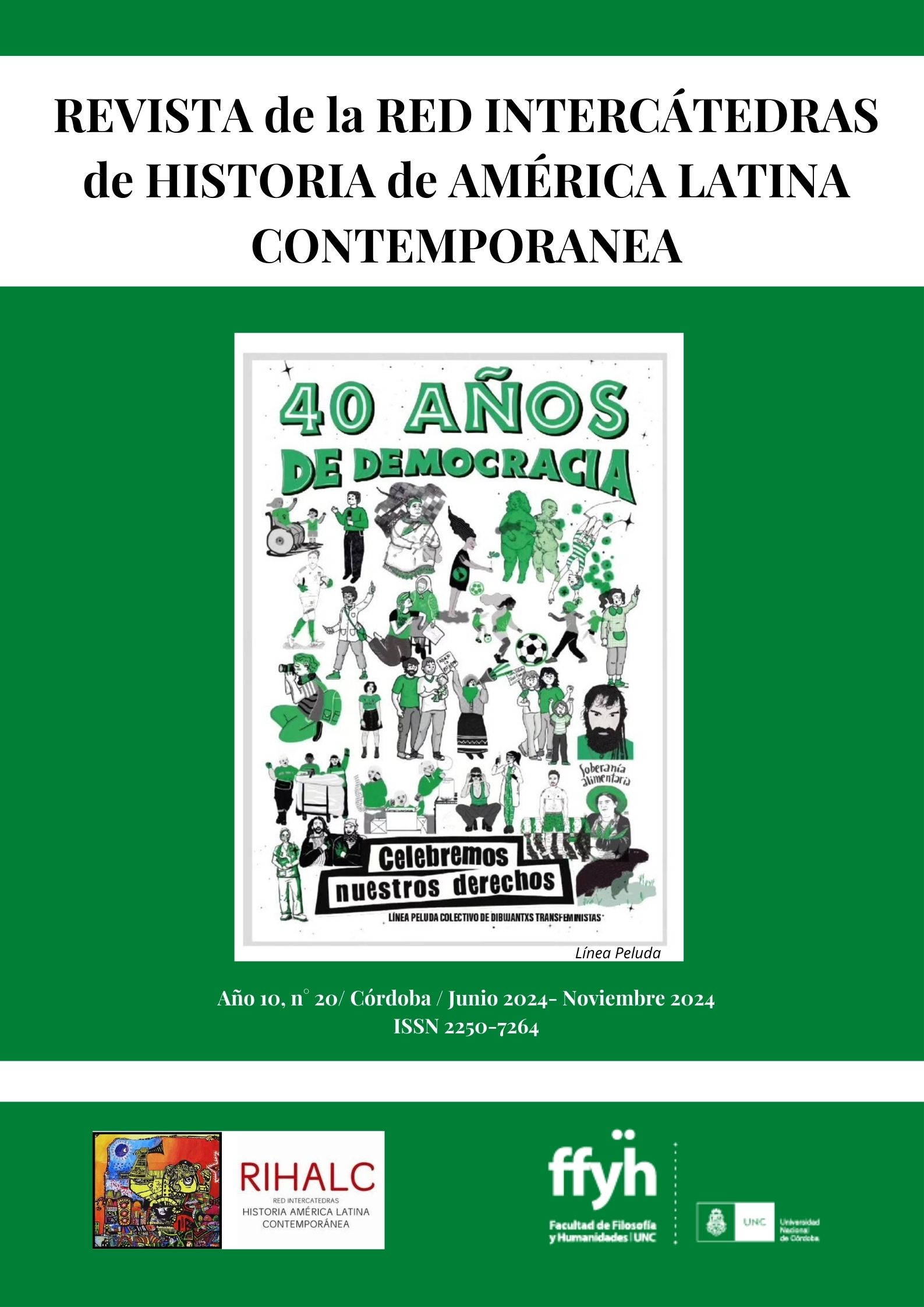Housing strategies and implementations by the Chilean State, 1965-1985
Keywords:
Housing, Politics, ChileAbstract
Between 1965 and 1985, the housing strategies and implementations formulated by the Chilean State were discussed along three different political lines, establishing conceptual, formal and urban plans related to their perspectives. During the mandate of Eduardo Frei (1965-1970), the problems derived from migration had repercussions in the cities, and the institutions focused on solving the problems of overcrowding and encampments, but continued the implementations of “Urban Remodeling”. In the following government of Salvador Allende (1970-1973), the political crisis would worsen and there was an increase in land seizures, as a system of struggle towards the acquisition of housing. The State carried out relevant actions, revitalizing the Housing Corporations and others to solve the deficit. Finally, with the coup d'état perpetrated by Augusto Pinochet (1973), the housing problem would be compounded by the reduction of the state apparatus, so that housing actions would be mainly mediated and executed mostly by the private sector, losing the developmentalist approach sought by previous governments. The purpose of this review is to examine the application of concepts and measures, as well as the main executions in housing matters, which were distinctive to each political stage and how they facilitated or hindered the development of housing as a key agency in urban construction.
References
AUCA (2020): “Amengual una experiencia”, AUCA: Arquitectura Urbanismo Construcción Arte, N° 31, pp. 27-48.
Barahona, Oscar (1972): “La vivienda social en Chile”, Hogar y Arquitectura, N° 98, pp. 98- 109.
Brignardello, Andrés. (2016): KPD. Historia social y memoria de una fábrica soviética en Chile. América en Movimiento, Valparaíso.
Bustos Gallardo, Beatriz; Lukas, Michael; Stamm, Caroline y Torre, André (2019): Neoliberalismo y gobernanza territorial: propuestas y reflexiones a partir del caso de Chile, Revista de geografía Norte Grande, N° 73, pp. 161-183.
Corporación Mejoramiento Urbano (2020): “CORMU”, Auca: Arquitectura Urbanismo Construcción Arte, N° 21, pp. 33–35.
Daher, Antonio (1991): “Neoliberalismo urbano en Chile”, Estudios Públicos, N° 43, pp. 281-299.
Díaz, Francisco; Carrasco, Gonzalo y Peliowski, Amari (2022): Vamos p'arriba": La remodelación San Borja y la vivienda vertical en Chile, Ediciones ARQ, Santiago de Chile.
Espinoza, Vicente (1988): Para una historia de los pobres de la ciudad, Sur Ediciones, Santiago de Chile.
Felsenhardt, Cristina (1995): “Relación entre arquitectura y política a través de la vivienda para la clase media en los últimos 30 años”, en Pedro Bannen (ed.), Santiago de Chile, quince escritos y cien imágenes, Ediciones ARQ, Santiago de Chile, pp. 4-151.
Fernández, Cristian (1990): “Hacia una modernidad apropiada: obstáculos y tareas internas”, en Antonio Toca (ed.), Nueva Arquitectura en América Latina: Presente y Futuro, Ediciones Gustavo Gili, México, pp. 71-93.
Gertosio, Rodrigo (2017): Ciudad Utópica, Villa Frei, Sa caban, Santiago de Chile.
Granifo, Carlos; Ahlers, Carlos; Bravo, Luis; Becerra, Eduardo; Cárdenas, Juan; Depetris, Oreste; Hernández, Angel; Labbé, Ernesto, y Neira, Carlos (2020): “Amengual una encuesta”, Auca: Arquitectura Urbanismo Construcción Arte, N° 31, pp. 49-59.
Haramoto, Edwin. (2020): “Vivienda e Información la necesidad de información en el proceso habitacional chileno”, Auca: Arquitectura Urbanismo Construcción Arte, N° 39, pp. 22-40.
Hidalgo, Rodrigo (2019): La vivienda social en Chile y la construcción del espacio urbano en el Santiago del siglo XX, RIL Editores, Santiago de Chile.
Kusnetzoff, Fernando (2005): “Prólogo”, en Comité de Derechos Humanos y Ciudadanos (ed.). Ocho arquitectos en la memoria, Fundación Espacio y Desarrollo y Colegio de Arquitectos de Chile, Santiago de Chile.
López, Rafael y Brito, Gustavo (1986): “Santiago de Chile”, en Rafael López y Roberto Segre (eds.), Tendencias arquitectónicas y caos urbano en Latinoamérica, Ediciones G. Gilli, México, p. 121.
MINVU (1976): Vivienda social para sectores de población de bajos ingresos, exposición demostrativa “Santiago Amengual”, experiencia en vivienda social, Ministerio de Vivienda y Urbanismo, Santiago de Chile.
Pidgeon, Mónica (1973): “Campamentos”, Hogar y Arquitectura, N°104, pp. 19-21.
Raposo, Alfonso (2023): El Habitante y su Vivienda. Planificación Habitacional en Chile (1965- 1979), LOM Ediciones, Santiago de Chile.
Raposo, Alfonso (2000): Notas sobre Estado, vivienda y población. Revista INVI, N°15, Vol. 39, pp. 6-67.
Raposo, Alfonso y Valencia, Marco (2004): “Modernidad, Diseño Urbano y Utopia: Notas sobre el fundamento político de las acciones de Remodelación Urbana en Santiago. El caso de CORMU 1966-1973”, Revista De Urbanismo, N° 9, pp. 116-140.
Rojas-Dunlop, Ignacio. (2019): “Campamento Unidad Popular (1970-1973): movimiento de pobladores y poder popular en la zona sur-oriente de Santiago”, Izquierdas, N° 45, pp. 79-107.
Segre, Roberto (1975): América Latina en su Arquitectura, Siglo XXI editores, Mexico D. F.
Vásquez-Manquián, Karin Pamela; Decinti-Weiss, Alejandra Verónica, y Díaz-Huenchuan, Marco Antonio (2020): “Edificios Prefabricados en Chile: Diagnóstico Energético a 40 Años De Su Construcción. Caso De Estudio: Edificios Kpd, Santiago De Chile”, Revista hábitat sustentable, N° 10, Vol. 2, pp. 8-23.
Vergara-Vidal, Jorge y Asenjo-Muñoz, Diego (2023): “Zona de Operación. La hibridez táctica de la exposición demostrativa Santiago Amengual en Pudahuel, Chile”, Arquitecturas Del Sur, N° 41, Vol. 64, pp. 38–53.
Vergara-Vidal, Jorge; Álvarez, Daniela; Asenjo, Diego y Dintrans, Denisse (2022): “Valores pragmáticos. La operación de la practicidad y la coherencia en la vivienda racionalizada CORVI”, Revista de Arquitectura, N° 27, Vol. 42, pp. 110-125.
Downloads
Published
Issue
Section
License

This work is licensed under a Creative Commons Attribution-NonCommercial-NoDerivatives 4.0 International License.
Aquellos autores/as que tengan publicaciones con esta revista, aceptan los términos siguientes:
- Los autores/as conservarán sus derechos de autor y garantizarán a la revista el derecho de primera publicación de su obra, el cuál estará simultáneamente sujeto a la Licencia de reconocimiento de Creative Commons que permite la libre distribución con mención de su(s) creadores, no permite el uso comercial ni las obras derivadas. Los autores, al enviar el artículo, acuerdan publicarlo bajo esta licencia..
- Los autores/as podrán adoptar otros acuerdos de licencia no exclusiva de distribución de la versión de la obra publicada (p. ej.: depositarla en un archivo telemático institucional o publicarla en un volumen monográfico) siempre que se indique la publicación inicial en esta revista.
- Se permite y recomienda a los autores/as difundir su obra a través de Internet (p. ej.: en archivos telemáticos institucionales o en su página web) después del proceso de publicación.



